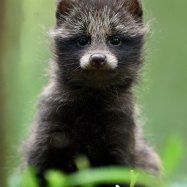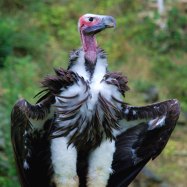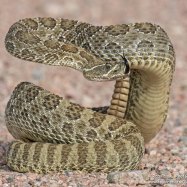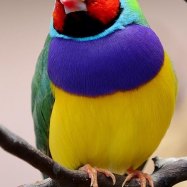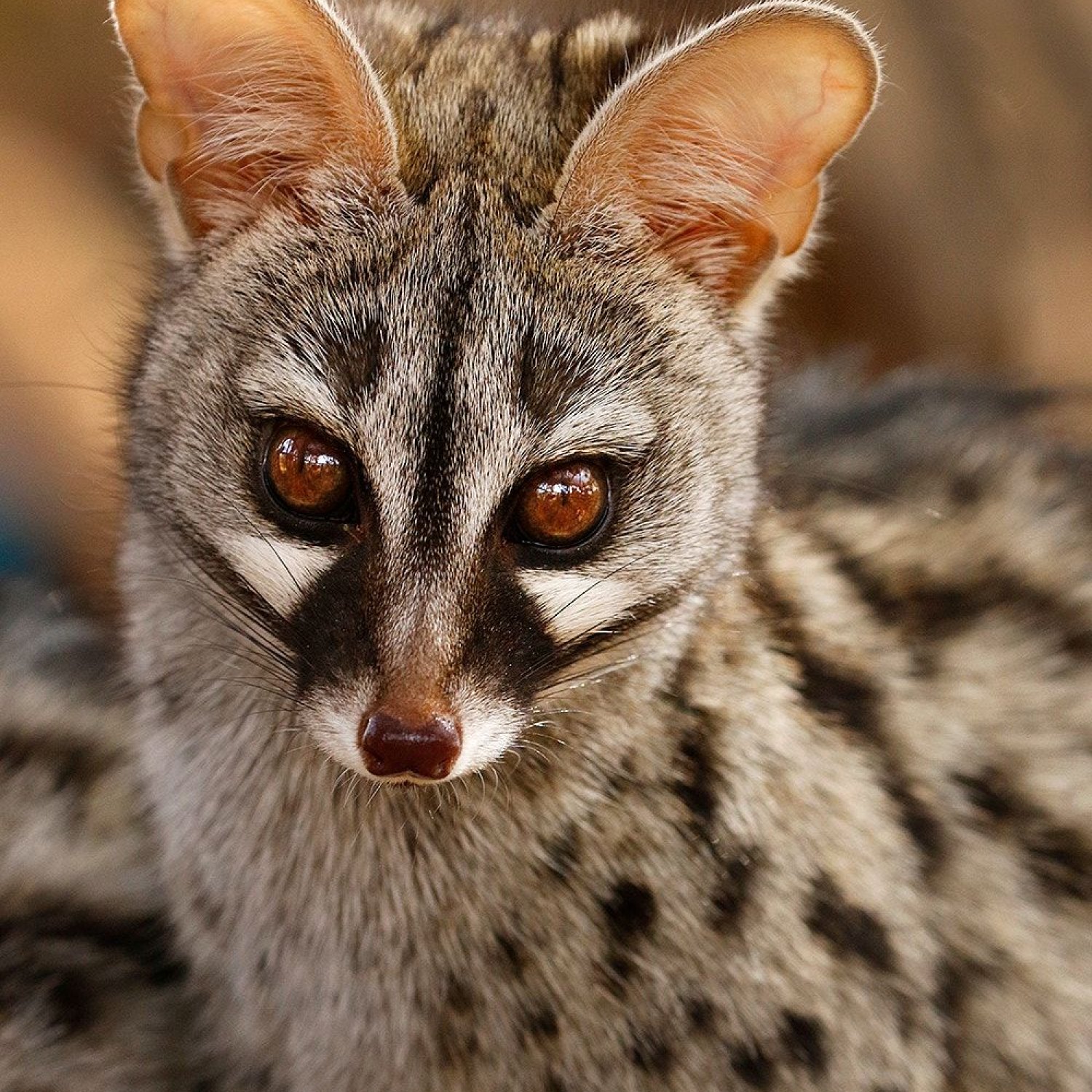
Genet
40-55 cm
Meet the sleek and elusive Genet, a cat-like creature found in Sub-Saharan Africa. Known for their slender bodies, these animals belong to the Viverridae family and can grow up to 40-55 cm in length. Keep an eye out for their spotted coats in the wild! #Genet #AfricanAnimals #Viverridae
Animal Details Summary:
Common Name: Genet
Kingdom: Animalia
Habitat: Woodlands, savannas, forests, and rocky habitats
The Mysterious and Fascinating Genet: A Hidden Beauty in the African Countryside
In the vast and diverse landscapes of Africa, there are countless species that roam, crawl, and fly. However, one animal that has managed to capture the attention and curiosity of researchers, scientists, and wildlife enthusiasts is the elusive Genet. With its unique appearance and behavior, the Genet has been a subject of fascination for centuries, and yet a lot about this animal remains a mystery. In this article, we will explore the characteristics, habitat, feeding methods, geographical distribution, and more about this enigmatic creature known as the Genet Genet.The Genet's Scientific Classification
Before diving into the intriguing world of the Genet, let's start with its scientific classification. The Genet, also known by its scientific name Genetta genetta, belongs to the Animalia kingdom, Chordata phylum, Mammalia class, Carnivora order, and Viverridae family. It is believed that Genets have been around for over 40 million years and have evolved into various species, with the African Genet being the most prevalent.A Rare and Mysterious Hunter
The Genet's appearance is both striking and mysterious, making it stand out from other animals in its family. With its long, slender body and a cat-like shape, it has often been described as a cross between a cat and a weasel. Its silky, spotted fur ranges from yellow-brown to grayish-brown, with a distinctive black band running across its back. This unique coloring and pattern allows the Genet to blend into its surroundings, making it difficult for predators to spot them.Where to Find the Genet
One of the reasons why the Genet is so mysterious is because it is not often seen in the wild. They are mainly found in sub-Saharan Africa, but have been spotted in various countries in Europe and the Middle East Golden Masked Owl. They have a diverse habitat range, including woodlands, savannas, forests, and rocky areas. They prefer to live in areas with high vegetation cover, giving them plenty of places to hide and hunt.The Genet's Secretive and Nocturnal Nature
Genets are primarily nocturnal animals, meaning they are most active at night. This secretive nature is another reason why they are rarely seen by humans. During the day, they rest in dens in trees or underground, only coming out at night to hunt. This behavior also helps them avoid potential predators during the day, such as leopards, lions, and birds of prey.A Unique and Adaptable Diet
The Genet's diet is primarily carnivorous, meaning they feed on small animals such as rodents, reptiles, birds, and insects. They are also known to eat fruits, eggs, and honey. Their flexible diet allows them to adapt to different environments and food sources, making them resilient and able to survive in a wide range of habitats. They are skilled hunters, using their sharp claws and flexible bodies to catch their prey.The Genet's Role in the Ecosystem
Like all animals, the Genet plays a crucial role in maintaining balance and harmony in its ecosystem. As a predator, it helps control the population of smaller animals, preventing an imbalance in the food chain. Additionally, they also serve as a food source for larger predators, such as leopards and birds of prey. Their role as both predator and prey helps maintain a healthy and diverse ecosystem.The Genet's Unique Adaptations
Besides its spotted fur and flexible diet, the Genet has other unique adaptations that help it survive in its environment. One of these is their retractable claws, which allow them to climb trees and move silently, making them excellent hunters. They also have a keen sense of smell, hearing, and sight, which helps them navigate and find prey in the dimly lit African night.A Conservation Concern
Despite being elusive and not commonly seen, the Genet is still under threat due to human activities. Habitat destruction, poaching, and getting caught in snares meant for other animals are some of the major threats to their survival. Therefore, it is essential to raise awareness and take measures to protect and conserve this unique animal to ensure a healthy ecosystem for future generations.In Conclusion
The Genet may not be as famous or well-known as other African animals, but it is undoubtedly a fascinating and mysterious creature. With its striking appearance, elusive nature, and crucial role in the ecosystem, the Genet is a hidden beauty of the African countryside. As we continue to learn more about this animal, let's also strive to protect and preserve its habitat, ensuring its existence for generations to come.

Genet
Animal Details Genet - Scientific Name: Genetta genetta
- Category: Animals G
- Scientific Name: Genetta genetta
- Common Name: Genet
- Kingdom: Animalia
- Phylum: Chordata
- Class: Mammalia
- Order: Carnivora
- Family: Viverridae
- Habitat: Woodlands, savannas, forests, and rocky habitats
- Feeding Method: Carnivorous
- Geographical Distribution: Africa, Europe, and the Middle East
- Country of Origin: Various countries in Africa
- Location: Sub-Saharan Africa
- Animal Coloration: Long, slender body with a spotted yellow-brown fur
- Body Shape: Slender and cat-like
- Length: 40-55 cm
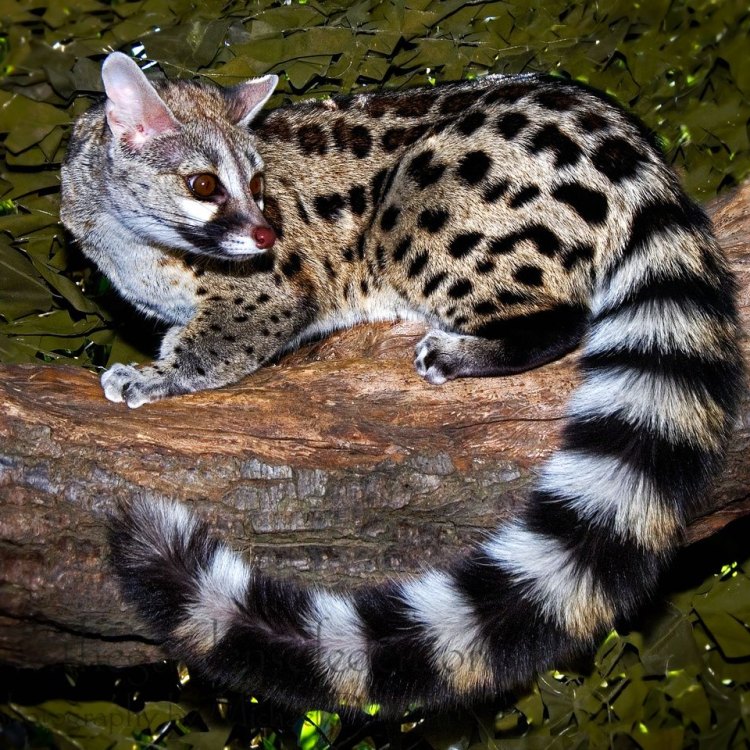
Genet
- Adult Size: Small to medium-sized
- Average Lifespan: 8-10 years
- Reproduction: Sexual
- Reproductive Behavior: Mating occurs during the rainy season
- Sound or Call: Variety of calls including purring, chattering, and alarm calls
- Migration Pattern: Non-migratory
- Social Groups: Solitary or live in small groups
- Behavior: Nocturnal and arboreal
- Threats: Habitat loss and fragmentation, hunting for fur
- Conservation Status: Least Concern
- Impact on Ecosystem: Seed dispersers
- Human Use: Fur industry
- Distinctive Features: Long body, large ears, and a ringed tail
- Interesting Facts: Can rotate their hind legs nearly 180 degrees to climb down trees headfirst
- Predator: Birds of prey, large snakes, and carnivores
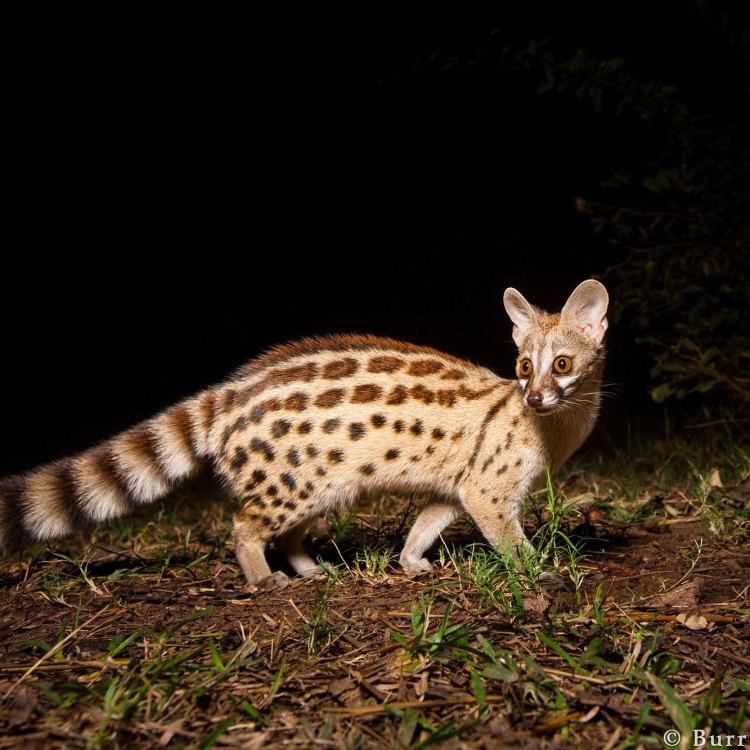
Genetta genetta
Exploring the Fascinating World of the Genet: An Arboreal Marvel
The world is full of unique and intriguing animals that often go unnoticed by the general public. One such creature is the genet, a small to medium-sized mammal that belongs to the family Viverridae, along with civets and linsangs. These elegant creatures, with their long bodies, large ears, and ringed tails, are native to Africa, Europe, and parts of Asia.With their elusive nature and intriguing lifestyle, genets have captured the attention of animal lovers and researchers alike PeaceOfAnimals.Com. In this article, we dive deep into the world of genets, uncovering their distinctive features, behaviors, and impact on the ecosystem.
The Spotlight on Genet: Adult Size and Average Lifespan
Genets are small to medium-sized carnivores, with an average body length of 38-55cm and a weight ranging from 1 to 3 kilograms. However, they can grow up to 68cm in length, including their tail, which can measure up to 48cm. Their slender bodies are covered in fur, which varies in color from grey to brown or yellow, with spots, stripes, or rings. This unique coloration serves as camouflage when they are in their natural habitat – the treetops.The average lifespan of a genet in the wild is 8-10 years, with some individuals living up to 13 years. In captivity, genets can live up to 20 years, which highlights the importance of quality care for these elusive animals.
A Sexual Reproduction Cycle and Mating Season
Genets are solitary animals, and their reproductive behavior is triggered by the changing climatic conditions. They are seasonal breeders, with mating occurring during the rainy season, which is usually between October and March Green Mamba. During this time, male and female genets will come together to reproduce.The female genet gives birth to 2-4 kittens after a gestation period of around 10 weeks. The kittens are born blind and helpless, with their eyes opening after 8 days. The mother takes on the sole responsibility of raising the young ones, and they are weaned at around 6-7 weeks. As solitary animals, genet kittens become independent after 8 months and will fend for themselves.
Communication through a Variety of Calls
Genets are known for their vocalizations, which serve as a means of communication within their solitary or small group social structures. These animals have a diverse range of calls, including purring, chattering, and alarm calls. Each call carries a specific message, and through these vocalizations, genets establish territories, express distress or aggression, and attract mates during the breeding season.Non-Migratory Lifestyle and Arboreal Behavior
Genets are non-migratory animals, meaning they do not undertake long-distance journeys in search of resources. Instead, they establish home ranges within their preferred habitats, which could be forests, savannahs, or even urban areas. These animals are arboreal, meaning they spend a majority of their time in trees, using their sharp claws and nimble bodies to navigate their surroundings.Genets are nocturnal creatures, which means they are most active at night. During the day, they will retreat to their dens in tree hollows or abandoned bird nests. These dens serve as a safe haven from predators, and genets will come out at dusk to forage for food.
Habitat Loss and Hunting for Fur: Threats to the Genet
The biggest threat facing genets is habitat loss and fragmentation. These animals are highly dependent on trees for shelter, foraging, and mating, and with deforestation and urbanization expanding, their habitats are becoming scarce. This loss of habitat puts these animals at risk of extinction, as they struggle to find new homes and resources for survival.Another threat to genets is hunting for their fur, which is considered highly valuable in the fashion industry. These animals are often caught in traps set for other species, leading to their death or severe injury. The fur industry is a multi-billion-dollar industry, and the demand for genet fur continues to put pressure on their populations.
The Conservation Status of Genets and Their Impact on the Ecosystem
Genets are listed as Least Concern on the IUCN Red List, which means their populations are stable, and they are not at immediate risk of extinction. However, this does not mean that their conservation is not a concern. With their habitats declining and hunting posing a threat, it is essential to monitor and protect genet populations to ensure they remain a part of our world.These animals play a crucial role in the ecosystem as seed dispersers. As they move through trees, they consume fruits, and the undigested seeds are dispersed into new areas, aiding in the regeneration of forests. Their presence in the ecosystem also contributes to maintaining balance and biodiversity, making them a vital species to conserve.
The Human Use of Genets: Fur Industry and Conservation Efforts
Genets have been hunted for their fur for centuries, with their distinctive patterns making it desirable for clothing and accessories. In recent years, however, the awareness of the potential harm to genet populations and the environment has led to a decrease in the demand for their fur. Many fashion brands and organizations have begun promoting sustainable and ethical alternatives, reducing the demand for genet fur.In addition to this, there are also ongoing conservation efforts, such as habitat restoration and education programs, to raise awareness about the importance of protecting genets and their habitats. These efforts also involve implementing laws and regulations to prevent hunting and ensure sustainable practices in the fur industry.
Interesting Facts about Genets
Genets are fascinating animals, and there is always something new to discover about them. Here are some interesting facts about genets that showcase their unique features and behaviors:- Genets can rotate their hind legs nearly 180 degrees to climb down trees headfirst, making them one of the few animals with this ability.
- These animals are excellent climbers, and their sharp claws and flexible bodies allow them to move quickly and gracefully through the treetops.
- Despite their small size, genets are carnivorous hunters and will prey on a variety of animals, including insects, rodents, reptiles, and birds.
- Genets have a gland in their anus that secretes a musky scent, which they use to mark their territory, attracting mates and warding off predators.
- These animals have excellent eyesight, and their large ears allow them to pick up sounds and movements from a distance, helping them navigate their surroundings and detect potential threats.
Genet: A Delicate Balance of Nature
Genets may be small and elusive, but they play a vital role in maintaining the delicate balance of our ecosystem. From their unique features and behaviors to their impact on the environment, these animals are truly a marvel of nature. With increasing awareness and conservation efforts, we can ensure that genets continue to thrive in their natural habitats, and we get to enjoy their beauty and elegance for generations to come.
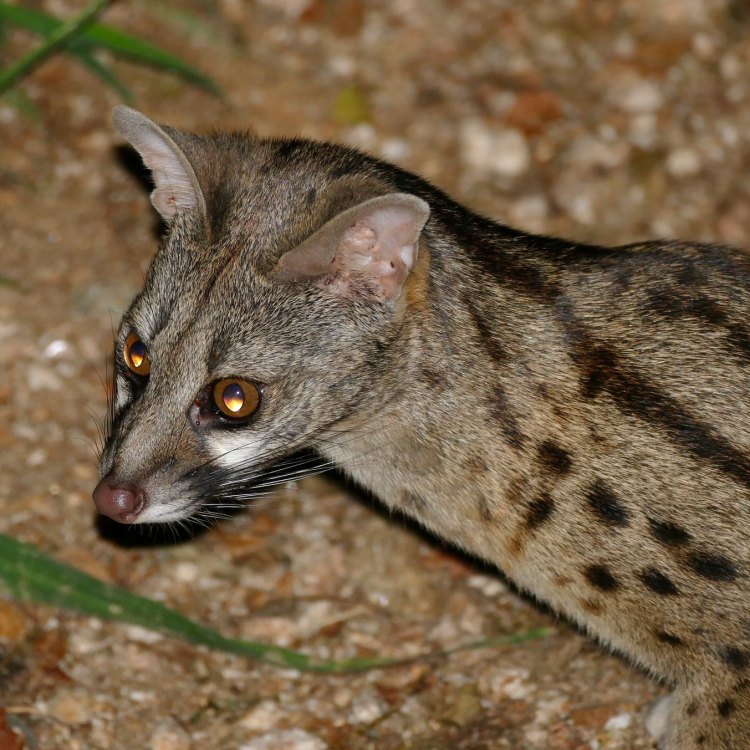
The Mysterious and Fascinating Genet: A Hidden Beauty in the African Countryside
Disclaimer: The content provided is for informational purposes only. We cannot guarantee the accuracy of the information on this page 100%. All information provided here may change without prior notice.




